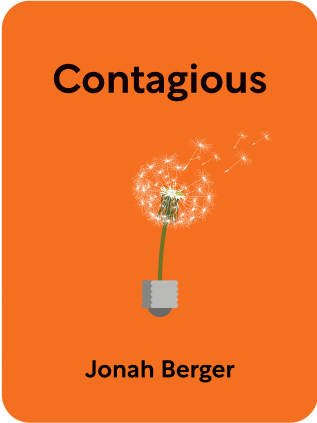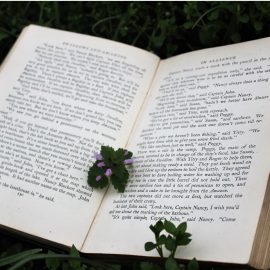

This article is an excerpt from the Shortform book guide to "Contagious" by Jonah Berger. Shortform has the world's best summaries and analyses of books you should be reading.
Like this article? Sign up for a free trial here .
What is story marketing? How can telling a good story make your marketing strategy more effective?
Story marketing uses good storytelling to make a marketing strategy more compelling. Information about the product or idea is subtly woven into a gripping narrative that grabs people’s attention. If your story is interesting or exciting enough, people will retell it to their friends and family—and they’ll pass on information about your product or idea in the process.
Find out how to create an effective story marketing strategy below.
Story Marketing: What You Need to Know
A key attribute of contagious products or ideas is that they use effective story marketing. This means that their marketing materials tell people a story. For example, you could embed factual information about your product into a heartwarming story about how using it changed someone’s life.
People pass on interesting stories about products or ideas for two reasons. First, they know that telling someone an interesting story will give them social currency—that telling it will make them seem interesting, too.
Second, sharing a story about a product or idea is much more socially acceptable than simply spouting facts about it. If you approached someone and, totally out of context, started listing the specifications and functions of a product that you really liked, the other person would find you boring at best and strange at worst. Whatever the case, you’re going to lose social currency. Meanwhile, embedding these specifications and functions in a story puts them back into context, making the fact you’ve brought them up a little bit less bizarre. Likewise, as long as the story is interesting, you’ll preserve your social currency.
Telling the Right Kind of Story
It’s important to note that you can’t just incorporate information about your product or idea into any story and expect that story to automatically generate word of mouth. You need to tell the right kind of story: one that’s actually effective at getting people talking about your product or idea.
Effective stories have two main attributes:
- They factor in some of the other principles of creating contagious content: specifically, giving social currency, generating emotions, and providing practical value.
- They force people to share the “right” parts of the narrative—the parts that mention your product or idea. People can’t leave this information out when they retell the tale.
Effective Story Marketing
As you’ve learned, things that give people social currency, inspire high-arousal emotions, and offer some practical value are more likely to be talked about. Therefore, if your story marketing has these attributes, it’s more likely to be passed on.
For example, imagine you’re trying to market a new energy bar. You decide to come up with a story for your marketing materials in which a man is in a rush to get to work and doesn’t have time for breakfast. He decides to eat your energy bar at his desk. You tell consumers that doing so leaves the man full until lunchtime, but don’t explain the “why”: for instance, the nutritional content of the bar that makes it so filling.
This story doesn’t really give social currency. It’s not remarkable because it’s a fairly ordinary, everyday scenario. It’s also arguably quite boring. Because of this, it fails to inspire any high-arousal emotions. Finally, it doesn’t provide the consumer with much practical information. All of these factors mean that people are unlikely to pay much attention to or even remember your story, making it equally unlikely that they’ll pass it on.
In contrast, you could tell a story about a man who’s in the process of climbing Mount Everest. His energy levels are depleting, so he decides to snack on your company’s energy bar. The man is revitalized because of the numerous nutritional benefits of the bar. You make sure to mention these benefits in your ad. He continues his trek up the mountain, eventually reaching the summit.
This story is much more remarkable—climbing Mount Everest is a pretty impressive feat. Therefore, telling the story provides more social currency. Climbing Everest is also pretty awe-inspiring. In this way, your ad generates a high-arousal emotion. Finally, you’ve made sure to include some information about the nutritional value of the bar in your ad, giving it some practical value.
Exercise: Tell a Shareable Story
Learn how to effectively use story marketing:
- Think of a product that you’ve created (or want to create). How and why did you first decide to create this product? Outline its “origin story” below.
- Now, think about your product’s benefits and unique selling point. Tell a story that incorporates one or both of these factors. (For instance, tell the tale of how using your product changed someone’s life, or how someone discovered that your product was totally different from everything else on the market.)
- Do you feel confident that either (or both) of these stories could form part of a successful story marketing plan? Why or why not? (Remember: successful stories make the product an integral part of the narrative, and may also incorporate the principles of social currency, emotions, and practical value.)

———End of Preview———
Like what you just read? Read the rest of the world's best book summary and analysis of Jonah Berger's "Contagious" at Shortform .
Here's what you'll find in our full Contagious summary :
- Why some new products and ideas gain widespread popularity while others fail
- The six principles to making your product or idea contagious
- The importance of word of mouth in marketing






